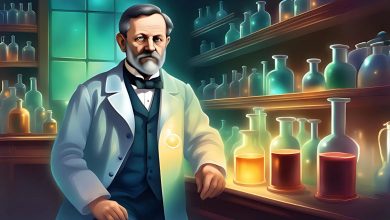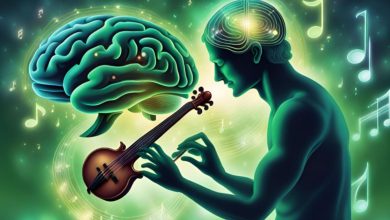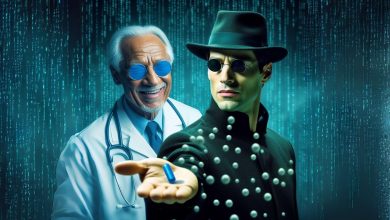Is it possible for people with limb loss to feel like they still have it? Or could there be something as hard to believe as a woman’s left hand trying to kill her? These unfortunate people, who couldn’t even name their conditions let alone cure them, are in this state not because they are crazy, but because of chemical or physical damage that happened to their brains.
The Bridge Between the Two Hemispheres of the Brain: The Corpus Callosum
The brain has two hemispheres connected by a structure called the Corpus Callosum. Basically, we can say that the left hemisphere of our brain controls the right of our body, and the right hemisphere controls the left.

The reason why a patient’s left hand tried to strangle her is that the corpus callosum was damaged as a result of a stroke. This damage causes the left hemisphere of the brain, which thinks more analytically and rationally, to be unable to control the right hemisphere, which is more anxious and depressed. Just as the patient in the example is not crazy, Tom is not crazy either, who says that he can still feel his arm, which was cut off during an operation, in its old place and even claims that he can touch objects with the same arm and reach for a ringing phone.
Feeling Without Touch: Phantom Limb Syndrome
Although it is difficult to find names for such unfortunate events from time to time, Tom is at least one of the lucky ones to be diagnosed. Unfortunately, being diagnosed doesn’t mean that Tom’s condition can be fully explained. Tom’s condition is called Phantom Limb Syndrome, and the vast majority of the patients who had an amputation experience this condition. Amputation is the separation of a limb from the body due to a medical operation or trauma, and it is known that 57.7 million people worldwide have had an amputation. Between 50% and 80% of these people suffer from Phantom Limb Pain. So, what is Phantom Limb Syndrome?

The origin of the term dates back to the 16th century. The feeling of the amputated limb where it used to be is called Phantom Limb Syndrome, and the pain in the area is called Phantom Limb Pain. Ghost limbs can be seen not only in external limbs where amputation is more common, such as arms and legs but also in every single limb that was removed from the body. Examples of this situation are patients who continue to suffer from appendicitis pain after the removal of their appendix, menstrual pain after the removal of the uterus, and phantom erections after the removal of the penis.
How Does a Non-Existing Limb Bring Us Pain?
Since the 16th century, many hypotheses have been put forward to explain this interesting phenomenon. Some of these ideas have no scientific basis, such as the immortal soul continuing to exist even if the integrity of the body is broken, or that the patients only experience the feeling because of the sadness and longing they have for their amputated limbs. Another and more popular view is that the nerve endings in the remaining part of the amputated limb are still active, making it feel like the limb is still there.

The limbs, which we cannot see but know to exist, are not as positive as it seems, although they create an interesting science fiction scenario. Because the phantom limb sensation brings pain with it. Patients state that they experience this pain not in the stump (the part that remains in the body after amputation), but in the place where their amputated limb should normally be. Since pain has no material place, it becomes very difficult to both understand the cause and find a solution. A lot of work is going on in order to understand phantom limbs and to find a solution to this annoying and mysterious problem. One of the scientists interested in the subject and taking very important steps is Doctor V.S. Ramachandran.
The Illusion That Confuses Our Brains: Mirror Therapy
One day, a patient comes to Doctor Ramachandran’s clinic and says that his phantom arm is stuck in a strange position and he is unable to move it back. The patient says his phantom arm is causing incredible elbow pain. Doctor Ramachandran prepares a simple mechanism to relieve the pain of his patient. The main idea is to make the patient’s brain believe that his arm is still in place. He puts an open-top box in front of his patient, in the middle of which he placed a mirror, and asks him to put his good arm in front of the mirror.
In this method, which he calls “Mirror Therapy”, the patient sees the reflection of his intact arm where his amputated arm used to be. The patient happily states that as long as he looks in the mirror, he is able to move his ghost arm again and his pain has subsided. In fact, the same patient who continued mirror therapy at home, calls Dr. Ramachandran after a while and says he no longer has a ghost arm. He states that he only has a phantom palm and fingers dangling from his shoulder. He also gives the good news that the unbearable elbow pain disappears with mirror therapy. Visual feedback provided by the mirror tells the brain that your arm is in place and has nothing to worry about.

We talked about people who lost their limbs after amputation. But do people born with missing limbs also have phantom limbs? To answer this question, we can give an example of Mirabelle, a patient of Doctor Ramachandran.
Can Someone With Congenital Limb Loss Also Suffer From Phantom Limb Pain?
Mirabelle Kumar, a student, was born without arms and was referred to Dr. Ramachandran. Under her shoulders, an underdeveloped upper arm bone was visible, but there was no forearm or ulna. Mirabelle, who has never had arms, hands, or fingers in her life, says she has felt strong phantom limbs for as long as she can remember, and even states that her arms are 15-20 centimeters shorter than they normally should be. Because of this, she says that her prosthesis, which should fit like a glove, is too big for her and it is difficult for her to control it. After talking to her doctor, she agrees to use a shorter prosthesis than she normally should.
Science and Technology’s Gift to Humanity: Prosthesis
Thanks to science and technology, which is developing more and more every day, solutions are produced for phantom limb pain, experienced by 18% to 25% of amputee patients. One of these solutions is the prosthesis, which we are all very familiar with. As can be seen from Mirabelle’s case, prostheses play the role in the baffling of the brain, just like mirror therapy. Prostheses can be in various shapes and features. Although they cannot meet any bodily function, there are cosmetic prostheses used to complete the integrity of the external appearance, or there are myoelectric prostheses that you can control with electrical signals created by your muscles. It has been observed that myoelectric prostheses, which can be considered a relatively new invention, are more effective than cosmetic prostheses in reducing and stopping phantom limb pain. This is because they can satisfy the brain’s urge to move the phantom arm.

Mirabelle, Tom, and many other patients, who were born without a limb or who lost their limb as a result of trauma, manage to move on with their lives, albeit with certain difficulties. These patients can reach, hold, run and hug with their phantom limbs or with the help of prosthetics that allow their phantom limbs to do whatever they want. So much so that they can even sense physical stimuli coming to their phantom limbs. The projects to move the renewed and improved prostheses and mirror therapy into Virtual Reality seem quite promising. Or can a future with bionic arms and legs that can offer us more than just flesh and bone awaits us?
References and Future Readings
Lotze, M., Flor, H., Grodd, W., Larbig, W., & Birbaumer, N. (2001). Phantom movements and pain. An fMRI study in upper limb amputees. Brain : a journal of neurology, 124(Pt 11), 2268–2277. https://doi.org/10.1093/brain/124.11.2268
Moura, V. L., Faurot, K. R., Gaylord, S. A., Mann, J. D., Sill, M., Lynch, C., & Lee, M. Y. (2012). Mind-body interventions for treatment of phantom limb pain in persons with amputation. American journal of physical medicine & rehabilitation, 91(8), 701–714. https://doi.org/10.1097/PHM.0b013e3182466034
TEDxTalks. (2017, September 22). Phantom limbs and perceived pain | Jens Foell | tedxfsu. YouTube. Retrieved September 28, 2022, from https://www.youtube.com/watch?v=7-EpZcKgufM&feature=youtu.be
YouTube. (2019, January 28). From Phantom Limb to bionic arm | CNRS in English. YouTube. Retrieved September 28, 2022, from https://www.youtube.com/watch?v=sw3RxgCOAHw
The proofreading has been done by Asu Pelin Akköse and Mete Esencan.
Would you like to support us?
-
If you wish, you can support us by making
a monthly or one-time donation via our
Patreon account.
I Would Like To Support You!
- For more detailed information, you can check our “Support Us!” page!













